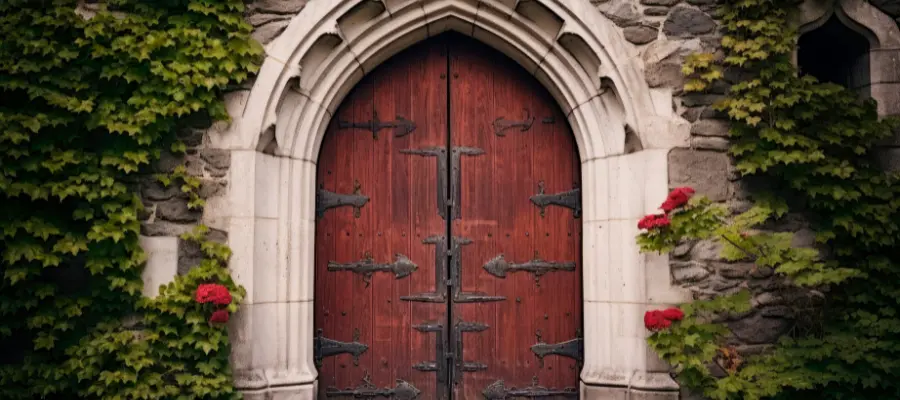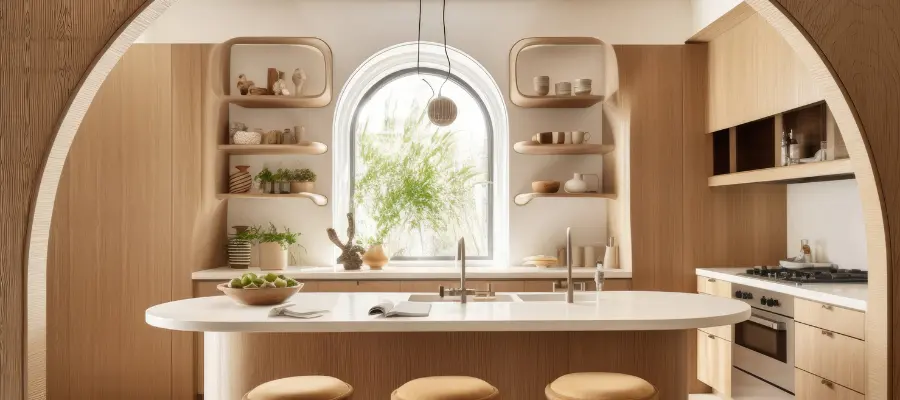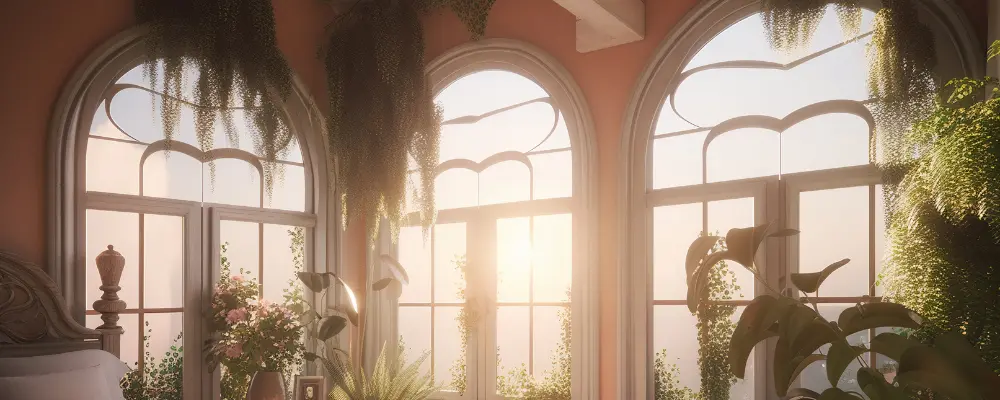Nowadays, arches are becoming more popular in the design of modern homes. Arches provide structural support to the house as they are curved at the top and designed to distribute weight evenly. From entrance gates to the kitchen, they offer various design elements for a better outlook.
In today’s blog of Brick & Bolt, you will explore arch design for home interiors, the latest trends, the variety of styles available, and the materials used to bring these stunning features to life.
What is an Arch in Home Design?
An arch is a curved structure constructed with wedge-shaped units (either bricks or stones) combined with mortar and placed at openings to withstand the weight of the wall above it and other superimposed loads. Due to its shape, the loads from above are distributed to supports.
Types of Arch Based on Shape
There are numerous types of arch designs. The following are the major types based on their shape.
- Round Arch
The Round Arch, also called a semi-circular arch, is composed of a continuous curve and was developed by the Romans. These Roman house arch designs were generally used side by side in a series to form arcades, bridges, large buildings, and aqueducts.
- Tudor Arch
The Tudor arch, also known as the four-centred arch, is a type of arch with a pointed apex. Here, the inner pair of curves has a radius much greater than that of the outer pair. The four-centred house arch design was utilised in doorways and window openings.
- Segmental Arch
An arch type with a circular arc of fewer than 180 degrees is called a segmental arch, sometimes known as a schema arch. Its ability to withstand thrust makes it one of the strongest arches. For bridges, the flatter segmental shape has long been preferred. As it becomes flatter, more of the segmental arch’s thrust is directed sideways towards the abutments or embankments at either end of the bridge.
- Rounded Horseshoe Arch
A Horseshoe arch (or Moorish arch) is a type of arch where the opening at the bottom is narrower than the arch’s entire span because the circular curvature continues below the horizontal line of its diameter. This house arch design is characterised by its U-shaped curve and lends a touch of Mediterranean or Moroccan flair. It’s ideal for creating a unique and vibrant atmosphere.
- Flat Arch
A spanning member constructed of mutually supporting voussoirs and having straight or almost straight horizontal intrados and extrados. Using Intrados as a base, the flat arch creates an equilateral triangle at a 60° angle. If minimum weight requirements are met, the flat arch is frequently employed in construction projects.
Arch Design for Home Interior

Main Entrance Arch Design
An arch is a design element that can make your home feel more connected, starting with the entrance. Much like how different types of doors can enhance the entrance to your home, an arch at your entryway creates a space where you can use different colours to stand out. Adding simple trim around the curved shape of the arch makes the colours pop, giving your home a great impression.
Arch Design for Dining Hall
Designing arches in the dining hall is a great way to make the space feel warm and cosy. Using a series of POP arches to connect the dining room to the kitchen and living room lets more light in, making the room look brighter and more inviting. Adding sunny colours and colourful floor tiles will make the dining room even more cheerful and exciting.
Kitchen Arch Design
Using arches in interior design creates a smooth, connected look between spaces. A kitchen arch framing a half-wall window connects the kitchen to the rest of the house while still keeping it partly hidden, allowing you to design a functional kitchen with seamless transitions.
Arch Design for Bedroom
Arches make a stylish statement in any modern bedroom. Using a decorative arch to frame the headboard can create a focal point in the room. You can also add a matching arch around a dressing unit, complete with a custom vanity mirror and cabinets at the bottom. To enhance the visual appeal, incorporate various patterns and textures in the bed linens and carpeting, and consider stunning bedroom wall colour combinations to transform the space.
Material Options for Arch Design for Home
Arch Design with Wood
A wooden arch design can turn a dull doorway into a welcoming space. Wood is a versatile design element that makes your home’s interior look luxurious. Options include hardwoods like Teak wood, oak wood and walnut wood for a classic look or reclaimed wood for a rustic feel.
Arch Design with Stone
Stone arches are classic and long-lasting. Materials like marble, granite, and limestone can produce a magnificent and luxurious atmosphere, but it’s essential to understand the difference between stone masonry and brick masonry when selecting the right material for your arch design.
Arch Design with POP
POP arch designs (Plastic of Paris designs) for arches are becoming more and more common. You can construct a POP ceiling with an arching pillar to highlight the beauty of your house.
Arch Design with Tiles
Using tiles to design an archway gives your home a more luxurious appearance, but choosing the best tiles for your home can be a daunting task, so be sure to refer to a comprehensive guide.
Pros and Cons of Arch Design for Home

Advantages of Arch Design :
- Due to their curved shape, arches are very effective for transferring compression forces downward. They also have a high load-bearing capacity, making them ideal for large-span structures.
- Arch decoration in the home offers better aesthetics.
- The curved surface of an arch provides efficient water drainage. It helps shed water quickly, preventing it from pooling on the roof.
- Arches can be built to fit a range of design specifications in terms of size and shape.
Disadvantages of Arch Design:
- Arch constructions can be more expensive to construct than other types of structures due to the complexity of their design and the specialised skills required for their construction.
- Transporting large arch structures can be challenging, particularly over land.
- Arch construction involves a complex construction process with skilled labour, which can contribute to higher home construction labour costs.
- Arch structure maintenance and repair can be expensive and time-consuming.
- Arch constructions are prone to noise amplification due to the materials and design, particularly in the case of severe rain or wind.
Conclusion
Adding arches to designing your dream homes not only makes them look more beautiful but also makes the structure stronger. Arch design for home can be used in many areas, like the entrance, kitchen, and bedroom, to add a touch of elegance. They help spread weight evenly and support heavy loads, making the building more solid. There are many styles to choose from, such as round, tudor, segmental, rounded horseshoe, and flat arches, so you can find one that fits your taste. You can also choose from different materials like wood, stone, plaster, or tiles to match your interior design with arch decoration in your home. By considering the advantages and disadvantages, homeowners can use arches to create stunning spaces.

